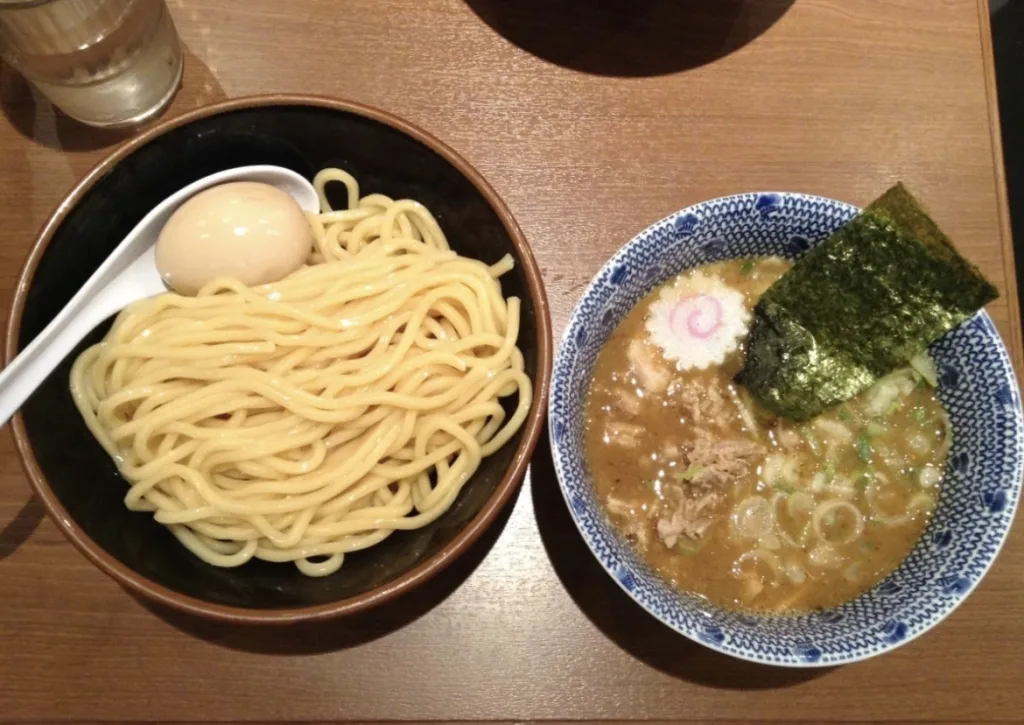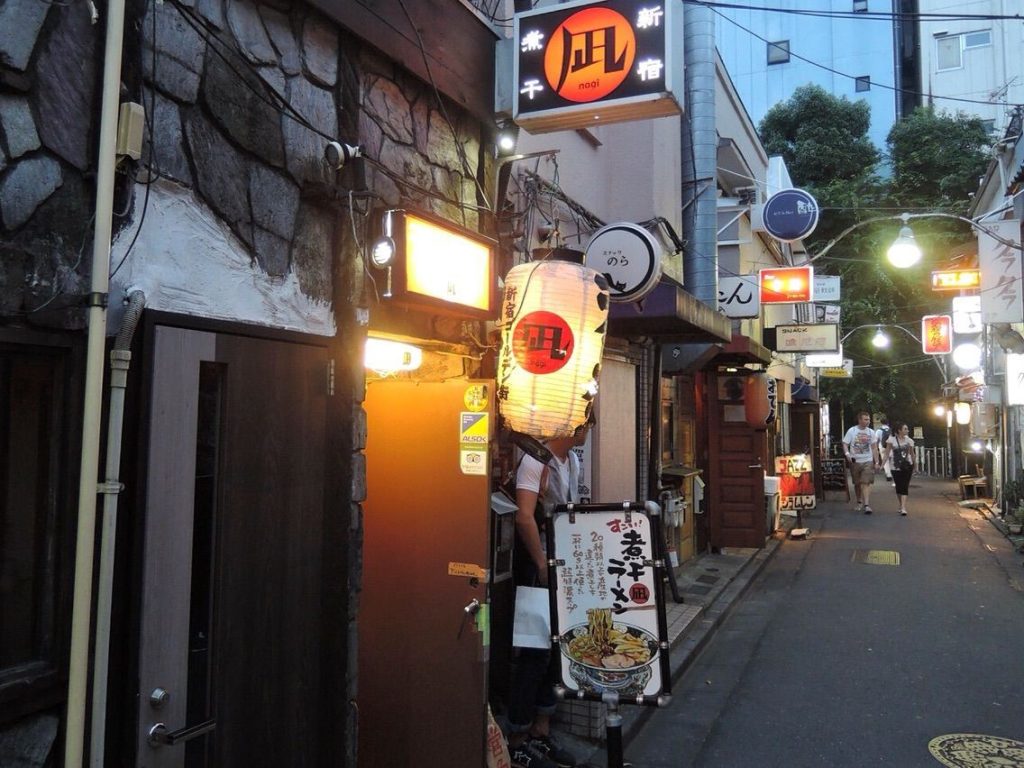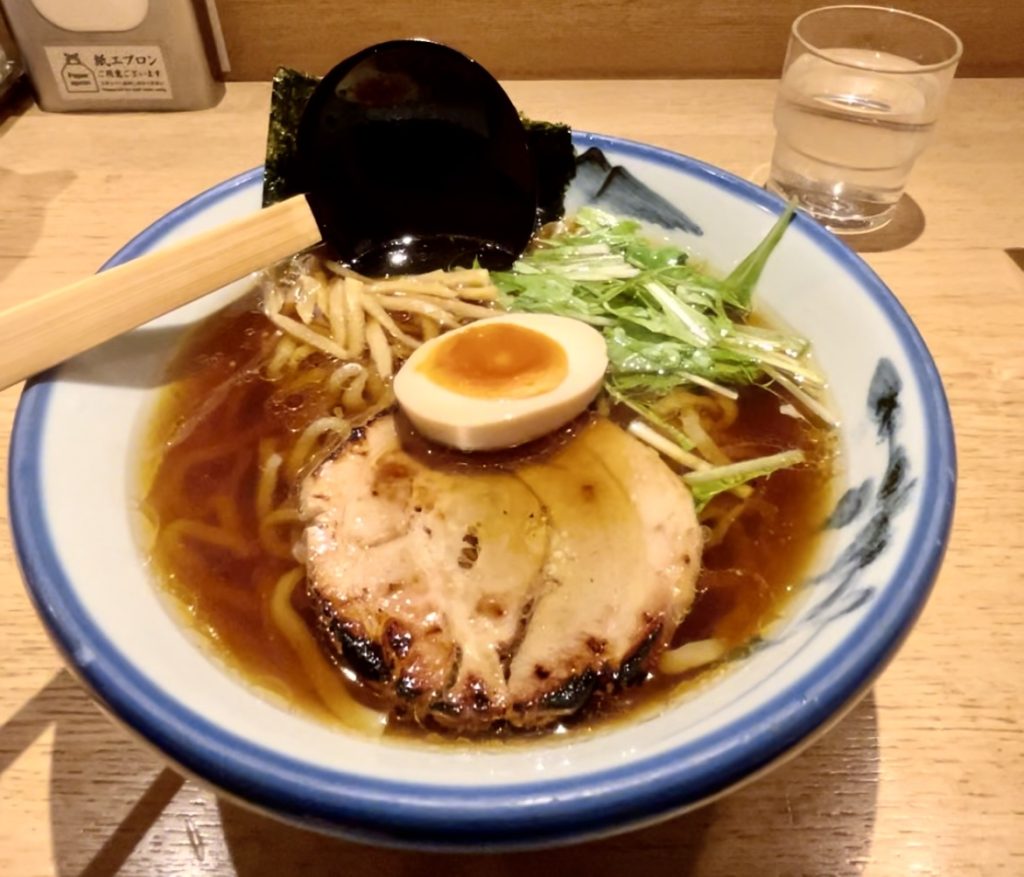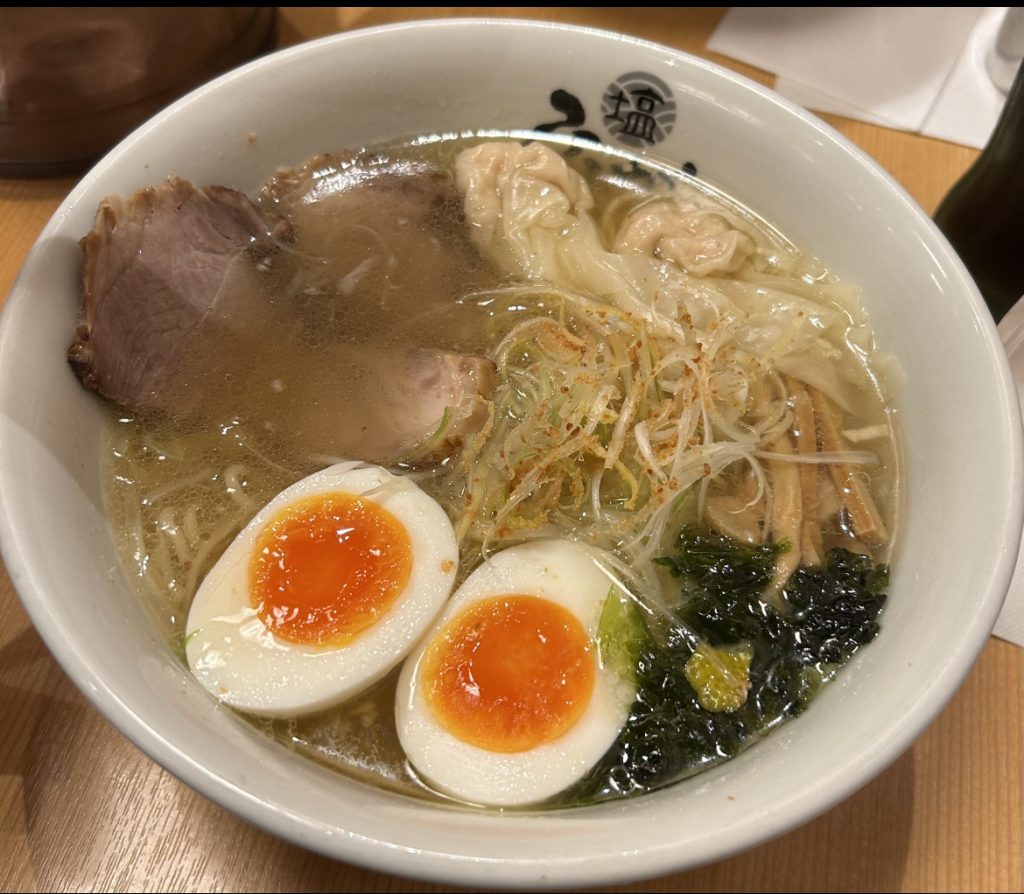Amazing ramen shops to visit in Japan
In April of 2023 I went to Japan for my second time (as an adult). On my first trip in 2017, I didn’t know what I was doing when I was looking for shops to visit. The number of ramen shops in Japan is staggering. Its easy to hop into the first place you see without knowing whether its good, bad or average, let alone what kind of ramen they serve.
This time around I saved reels, read articles, watched youtube videos and put together a nice list of places. We were there for 14 days and I had 13 bowls of ramen, out of a list of about 40 shops I had book marked. It’s hard to stay reasonable…
Anyway, here is a list of a few that any ramen tourist should consider visiting.
Rokurinsha
Address: Japan, 〒100-0005 Tokyo, Chiyoda City, Marunouchi, 1 Chome−9−1 東京駅一番街 B1 東京ラーメンストリート内

Rokurinsha is one of few tsukemen shops that is well known to westerners. David Chang featured it on a show he did which is how I initially learned about it, but this is one of the notoriously busy shops that lives on Ramen Street in the massive and hectic Tokyo Station.
I could write a whole article about this place and our experience with it (maybe I will) but for now lets focus on you. Whether or not you’re familiar with tsukemen (dipping noodles) this is a must try. The line will be long unless you’re very lucky or willing to wait for an hour or more before they open, but do yourself this favor. For us the line moved faster than we had anticipated. It’s possible that we were delirious from the long flight and time was flying, but who knows *shrug emoji*.
The noodles here (tsukemen noodles in general) are meant to be softer and more absorptive but that doesn’t sacrifice the chewiness of ramen you’re used to. The noodles are served cold and the soup is piping hot. So, part of the ‘game’ is to eat them as fast as you can so you get hot broth for as much of the portion of noodles as possible.
Human Beings Everybody Noodles
Address: 1 Chome-12-15 Nishinakajima, Yodogawa Ward, Osaka, 532-0011, Japan

Nestled near Nishinakajima-Minamigata station, its not necessarily apparent that you’re in the right place, but have faith. This was one of my top two or three favorite bowls of ramen ever, somehow presenting a truly rich broth with a limited body so as not to be too filling.
These guys are known for their shoyu / chintan, (clear not cloudy) broth. These noodles are softer than your average noodle, and I don’t mean they’re over cooked at all. In fact, they were cooked perfectly, and carried the broth and aroma oil just as you’d like it.
This bowl can be enjoyed by anyone. The flavors are pretty neutral (no fish components, at least in this one) and that pork belly was just perfection. Take a look at the video below to see what you’re in for 🙂
Mugen
Address: Japan, 〒553-0001 Osaka, Fukushima Ward, Ebie, 5 Chome−5−10 前田ビル

Located in a more residential area of Osaka, this Michelin starred shop is about a 30 minute train ride from the tourist center of Osaka, Dotomburi. When I say its worth the trip, it is worth the trip and boasts another bowl to live amongst amongst my all-time favorites. Technically this shop serves Chuka-Soba which, literally translated, means ‘Chinese Soba’. The name is more indicative of the roots of ramen itself rather than a descriptor of the bowl. Maybe I’ll write an article about this later.
The soup is a chicken based shoyu / chintan and relies heavily on the chicken flavor to boost the umami. The noodles were tasty and chewy and they were fresh. Normally I prefer a thicker more savory and forward-flavored chashu in my ramen, but the thin slices of pork in this were excellent and fit the pallet of the bowl perfectly. I can’t even use words to describe that egg, and my wife talked about it until we got home two weeks later.
Everything is done with deliberate care at Mugen, the atmosphere inside the shop is hard to put into words. Its a closed kitchen unlike many shops in Japan, and its quiet as though no one is actually working in the back.
Hook
Address: 2 Chome-40-11 Kamiogi, Suginami City, Tokyo 167-0043, Japan

Hook can be found in Ogikubo City , serving up big portions of thick, rich Miso Ramen. Ogikubo is an area of Tokyo worth a day of exploration but do the exploring before you hit this joint as the portions are large. Hook is on a main road in Ogikubo, and its popular so plan to wait in line. We were first in line, but by the time they’d opened, it was down the block. Also, there is a sign outside that says ‘No Talking’ so bonus if you prefer a quiet atmosphere for downing noods.
For me, miso ramen can be hit or miss, but this spot doesn’t miss. This pork based broth is thick and the miso tare makes it feel almost creamy once its added. The thick noodles are topped with a healthy pile of sprouts and cabbage, some menma, fresh corn, seared ground pork and a thick piece of juicy pork shoulder. There are options that include eggs, perhaps even a spicy miso version, but based on how far I got in my bowl, I made a good decision. This is a bowl of pure indulgence and if you’re a fan of miso ramen, you’ll be glad this is on your list.
This is a small shop that generally caters to locals so don’t expect much english (maybe you’ll get lucky). I busted out the Google translate and basically punched the first button I saw on their vending machine that said ‘Miso’. Just have that handy so you aren’t holding up the others behind you.
Ramen Break Beats
Address: Japan, 〒153-0063 Tokyo, Meguro City, Meguro, 4 Chome−21−19 アイビーハイツ 1階

Another of my all-timers, this shop located in a more residential area, this time in Meguro City, Tokyo. This isn’t a place you stumble upon walking around, but we weren’t the only tourists here either. Seating is based on a sign up sheet set up outside the shop in the morning. Plan to get there early, and expect to hang out in the area if you’re not first inline.
Highlighted by an immaculate presentation, this minimalist bowl is reminiscent of bowls I had as a kid in Japan, but entirely unique in it’s own way. The broth is full of umami but doesn’t over use salt, and the noodles are fresh and chewy, packing a punch of their own. The most interesting thing was the rare pork. It was almost like bacon. I couldn’t tell if it was pork belly or pork shoulder but it was smoky and paired perfectly with the soup.
In a way this bowl is an example of why I find ramen so fascinating. Something as evidently simple as a soup, flavored with soy sauce, can have so much depth and variance between shops. The presentation is an artistic masterpiece (from someone who has made a lot of ramen) and is a reflection of the care taken in developing your eating experience.
Nagi (Golden Gai shop)
Address: Japan, 〒160-0021 Tokyo, Shinjuku City, Kabukicho, 1 Chome−1−10 2F

Nagi is another well known shop on my list. There are at least several locations around Tokyo and I believe there are five locations now on the west coast. I’ve been to the one in Golden Gai, it’s in a unique area of Shinjuku where old buildings have been turned into tiny bars. This location of Nagi is tiny, seating about 10 people at once.
If you’re familiar with the brand from the US locations, don’t expect to get the same experience. Most of these shops that have crossed into the American markets have an updated menu to suit American tastes. Nagi is known for serving niboshi (dried sardines) ramen. This flavor is not on the menu I’ve seen online for US locations (please correct me if I’m wrong, I have never been stateside).
This style is not for everyone. Its very fish forward, and actually has a spicy component to its ‘standard’ option. My favorite unique characteristic of the bowls that Nagi serves up is that they include two kinds of noodles. I believe this is specific to the niboshi styles, not the Tonkotsu or squid ink styles.
One of the noodle types is slightly thicker than normal, and is chewy and unique on its own. The other is a wider flat noodle. Both add a dynamic edge to the ramen, and carry the broth and aroma oils a little differently. All in all, its a really cool experience, and the location makes it all the more interesting.
Afuri (Ebisu shop)
Address: Japan, 〒150-0013 Tokyo, Shibuya City, Ebisu, 1 Chome−1−7 117ビル 1F

Another chain spot that has left the shores of Japan has a solid reputation of making tasty ramen. We had this bowl while waiting for a reservation at a speakeasy nearby. It was the perfect food to eat before a couple of cocktails. It’s light so you don’t feel super full, but the noodles I had filled me up enough I wasn’t hungry either.
I highly recommend opting in for the thicker noodles. Christine had the thin noodles and wished she had gone with the thick option, like I did. Aside from a satisfying bowl of ramen, the whole vibe in Afuri is not necessarily what you’d expect from shops in Japan. Its modern and doesn’t cater to ‘ramen nostalgia’ but is still definitely a ramen shop. You still order from a vending machine, but this one is a touchscreen terminal (that is in english too) rather than the old button operated machines.
I branched out from my (predictable) choice of the standard shoyu option for the Yuzu Shoyu option which was nice change of pace. Based on the menu placement, the Yuzu shio (salt) and shoyu options are the flagships.There are a variety of alternatives including a vegan option which I think is rare in Japan.
Hirugao (Tokyo Ramen Street)
Address: Japan, 〒100-0005 Tokyo, Chiyoda City, Marunouchi, 1 Chome−9−1 一番街 地下一階 ラーメンストリート内 東京駅

Hirugao is another shop located on Ramen Street in Tokyo Station that might take some patience. Its worth the wait in line, though, for a couple of reasons. Aside from a rewarding bowl of delicious ramen, Tokyo Station is one of the worlds best people watching locations since its filled with people of all nationalities and backgrounds.
I went here specifically to get a taste of salt based broth since I’d been unintentionally avoiding it on this trip. This one has some really subtle, yet distinct flavors and aromas of fish, but unless you’re like deathly allergic to seafood in someway, don’t let that deter you. Christine generally doesn’t like those components in ramen but crushed this bowl.
Ingredients like bonito, kelp, and niboshi are common in ramen to help boost the umami even if you can’t pick the flavors out specifically. One of the marks of a really great bowl of ramen is using these ingredients to express those flavors without making them the focal point of the bowl. It is a delicate balance though.
I hope that this list has been helpful. If there are things thats you’d like to know or ways I can improve these posts, please let me know in the comments!






